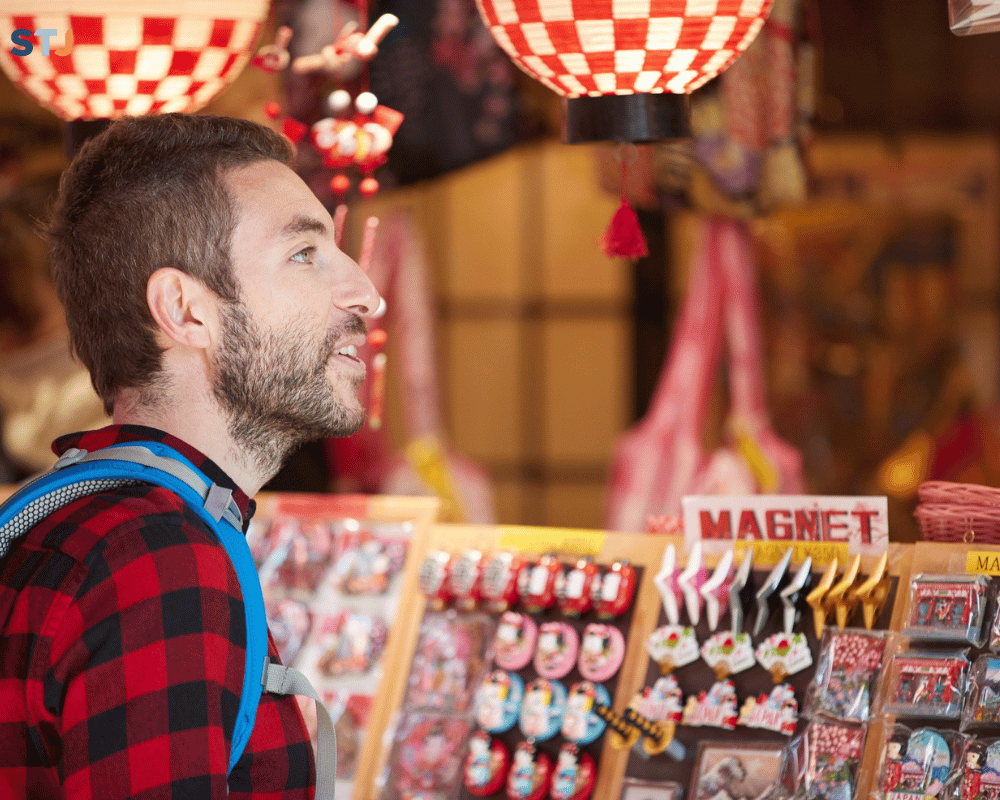By Sam Rippon.
The street was a canyon of concrete and shadows, the sky overhead bleeding into deep purple as night took hold. Somewhere behind me, a door slammed. A dog barked sharply, then silence swallowed the noise whole.
I walked faster, boots scuffing against uneven stone. Ahead, a group of figures loomed, their faces hidden, their voices low and rough, exchanging words I couldn’t understand. One of them glanced my way. My heart tripped over itself. This was it, the nightmare scene every warning back home had prepared me for. Alone. Foreign. Vulnerable.

I held my breath as I passed, every nerve on fire.
And then… Nothing happened.
One of them broke into a wide, easy smile. Another raised a hand in greeting. They shifted aside to let me through, like it was the most natural thing in the world.
And suddenly, I could breathe again.
The scent of sizzling street food floated through the air; meat, onions, something rich and unfamiliar. Lanterns swung overhead, casting soft, golden circles onto the walls. Somewhere nearby, laughter rang out, bright and careless. The ground beneath my feet felt less foreign, less heavy.
What I had been told was dangerous turned out to be… life.
Raw, real, and breathtakingly human.
The world isn’t the terrifying place we’re shown on screens. It’s bigger, warmer, and infinitely more beautiful, if you dare to see it for yourself.
When you grow up surrounded by headlines, it’s easy to believe that danger lurks around every corner of the world. Wars, crime, political unrest, the worst moments are packaged into thirty- second clips and broadcast across every screen. It makes the world feel small. It makes it feel hostile.
But standing there, halfway across the planet from my living room fears, I realised something no news report ever taught me: most people aren’t dangerous. They’re simply human. They’re simply living.
They’re buying bread for their families. Laughing with friends on street corners. Selling fresh fruit at market stalls, lighting candles at shrines, arguing over football scores, helping lost travellers find their way.
The world isn’t out to get you. The world, in all its messy, vibrant, chaotic beauty, is just trying to be.
Of course, bad things happen. There are places and moments where caution is wise. But what no headline will ever show you is the 99% of life that’s completely ordinary, and extraordinarily beautiful.
Because when you strip away the fear, what’s left is connection.
A shopkeeper handing you your bags with a smile. A stranger walking you two blocks out of their way just to make sure you find your hotel. A family inviting you into their home to share a meal, simply because you happened to be in the right place at the right time.
Travelling taught me that the world isn’t a collection of dangers to be avoided, it’s a patchwork of humanity waiting to be understood.
And once you experience that for yourself, you start to wonder, what else have we been taught to fear unnecessarily?
The more I travelled, the more I realised how much fear shapes the way we see the world. It tells us to stay where it’s familiar. To distrust the unknown. To see strangers as threats rather than potential friends.
But every new place chipped away at those old stories. Every smile, every act of kindness, every shared meal made it harder to believe that the world was something to be survived rather than celebrated.
Fear builds walls. Travel tears them down.
When you step beyond the headlines, you discover a world that is complex, yes, sometimes messy, sometimes challenging, but far more full of hope, humour and hospitality than you were ever led to believe.
The truth is, there is far more good out there than bad. Far more laughter than violence. Far more people willing to help you than to harm you.
And you don’t have to travel halfway across the globe to see it, sometimes it’s just a matter of being willing to look with new eyes, even at your own corner of the world.
The world isn’t perfect. It never will be.
But it is, more often than not, better, braver, and kinder than fear would have us believe.
All you have to do is go and see it for yourself.
Step beyond the fear. Step beyond the noise. Trust your own experience over the stories you’ve been told.
Because the world — the real world — is waiting.
They said it would be dangerous. They said I shouldn’t go. I went anyway, and what I found wasn’t danger, but life.
This article is part of the practical work carried out by the students of the Master’s in Travel Journalism.

